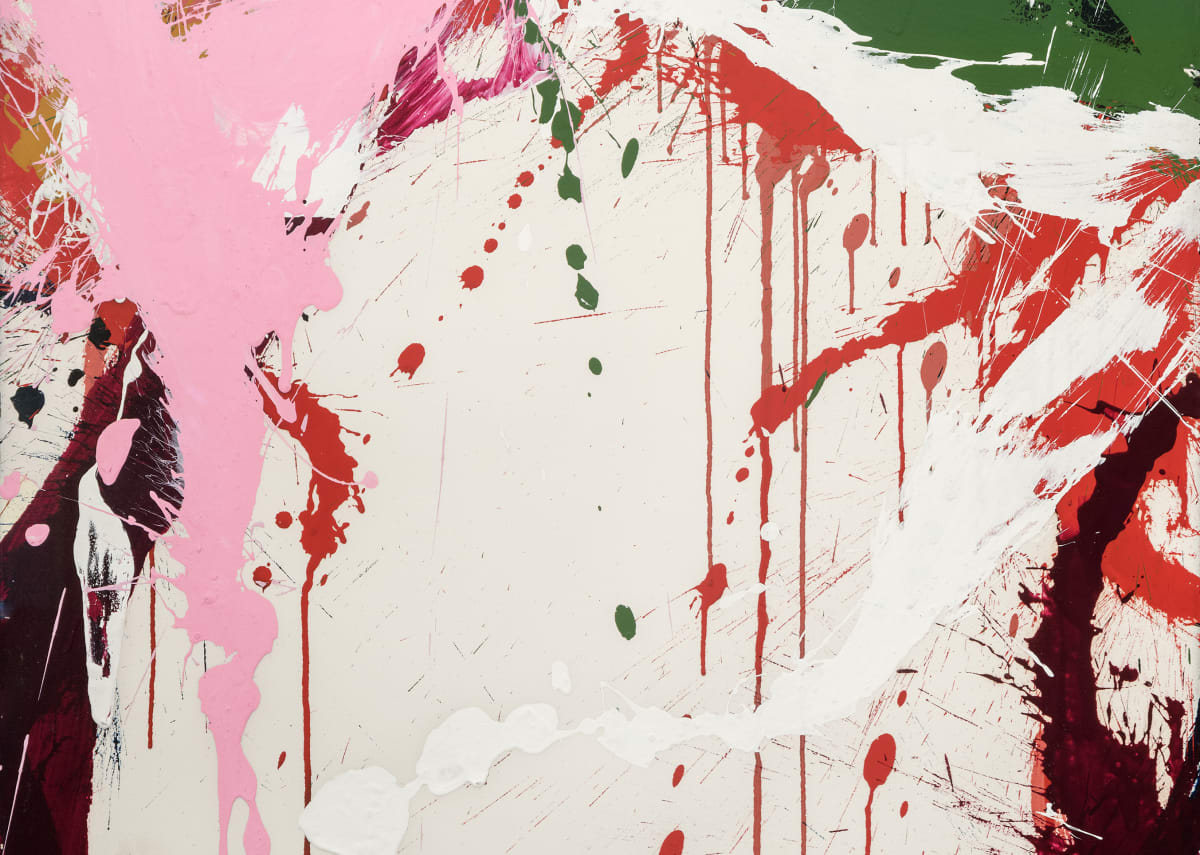
Blending tradition and innovation into a highly personal visionary style
The early death of Bob Thompson shortened a career that in merely eight years managed to create a lasting impression on the art world. Blending tradition and innovation into a highly personal visionary style, Thompson always pursued an individualist course, one that resulted in expressive figural works that told centuries-old stories for a new generation.
The early death of Bob Thompson shortened a career that in merely eight years managed to create a lasting impression on the art world. Blending tradition and innovation into a highly personal visionary style, Thompson always pursued an individualist course, one that resulted in expressive figural works that told centuries-old stories for a new generation.
As a young African-American artist in New York City, Thompson took advantage of his vibrant surroundings, befriending celebrated jazz musicians, noted art historians, and Beat poets alike. From his frequent visits to museums, the artist drew inspiration from the past, and sought to reinvigorate classical subjects and compositions. In doing so, Thompson made traditional themes relevant to a modern audience, reinterpreting motifs such as the Madonna and child to make them signify in a new context. His friend, the art historian Meyer Schapiro elucidated the artist’s relationship to the long tradition of art:
“Bob knew the paintings of the old masters and studied them constantly in reproductions and in the museums. He aspired to serene classic art like Piero della Francesca’s and Raphael’s, with large clearly balanced forms. He wished to embody in a grand noble style, but with intense colors, an imagery all his own and rooted in a poetic fantasy that looked exotic yet was native to him as an American Negro. His death was a great loss to the art of this country.” (1)
Born in Lousiville, Kentucky, Thompson lived a middle-class life in Kentucky. He graduated from high school and matriculated at Boston University temporarily. He subsequently relocated to the University of Louisville, where he pursued a course in art. In the summer of 1958, he traveled to Provincetown, where he encountered many of the artists who would later become his friends and peers in New York. Art historian Judith Wilson describes Thompson’s Provincetown summer as an eye-opening event for the young artist, a time that encouraged his “heady mix of imagery, techniques, and themes borrowed from contemporary artists. It was the start of his self-insertion into art history through the appropriation and reworking of choice bits of his predecessors’ styles.”(2)
Following a one-man show at the Arts in Louisville Gallery in late 1959, the young artist moved to New York. Settling on the Lower East Side, the artist secured his first Manhattan exhibition at the Delancey Street Museum. That year he also married Carol Plenda. With his friend, musician Jackie McLean, Thompson proved instrumental in the founding of Slugs, the infamous New York jazz club; in particular, the artist created posters to promote the new club. In 1961, Thompson received a Whitney Foundation fellowship, and he traveled to London aboard the Queen Elizabeth. Later the same year the Thompson moved to Paris, where they lived for a year. This sojourn was immensely inspirational for the artist. After having spent years examining European painting in books, the artist was finally able to see the old masters’ works in person. He and his wife then moved to Spain, where they set up home in Ibiza until 1963.
When Thompson returned to New York in 1963, his art underwent a decisive shift. His paintings from 1958 through 1962 often contained multiple figural groupings sometimes rendered in more muted colors and earth tones. In 1963, he simplified his compositions to focus on a single central action or event and adopted an even brighter chromatic range. As his narrative sensibility developed, he increasingly rendered his figures and landscapes with greater emotional expressiveness. He also incorporated traditional iconography and sources into his imagination, producing visionary works.
During this period, he received a number of solo exhibitions in New York—at Martha Jackson Gallery, Paula Johnson (now Paula Cooper) Gallery—and at Richard Gray in Chicago and Donald Morris in Detroit. He was also included in several group shows, and from 1963 onward, his work began to be actively acquired by private and public collections, such as the Whitney Museum of American Art, the Hirshhorn Museum and Sculpture Garden, the Detroit Institute of Arts, the Denver Art Museum, the Newark Museum, and the Art Institute of Chicago.
In 1965, Thompson returned to Provincetown, where the artist had spent the summer at the start of his career. Later that year, Thompson and his wife departed for Rome, where the artist continued to paint while studying the Italian Renaissance masterworks around him. Yet his vivacity for life caught up with him; although his doctors urged him to take care recovering from a gall bladder operation, the artist continued his high energy, unrestrained lifestyle, which lead to his untimely death in 1966.
(1) Printed in Bob Thompson: Heroes, Martyrs, and Spectres, exh. cat. (New York: Michael Rosenfeld Gallery, 1997), 3.
(2) Judith Wilson, “Garden of Music,” in Bob Thompson, exh. cat. (New York: Whitney Museum of American Art, 1999), 43.
















